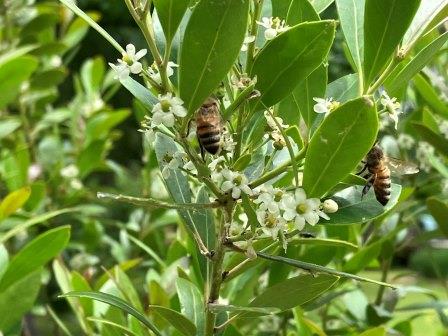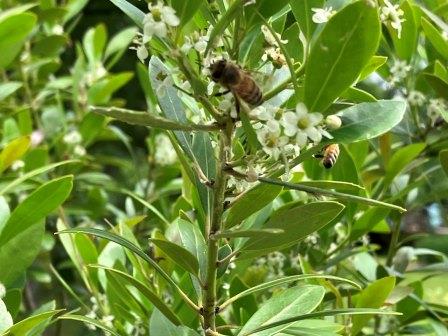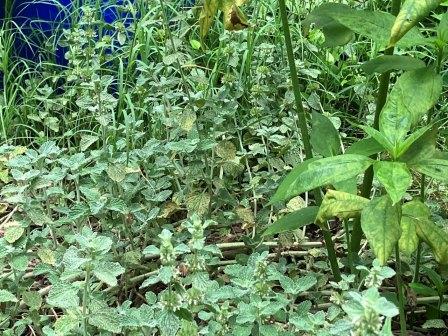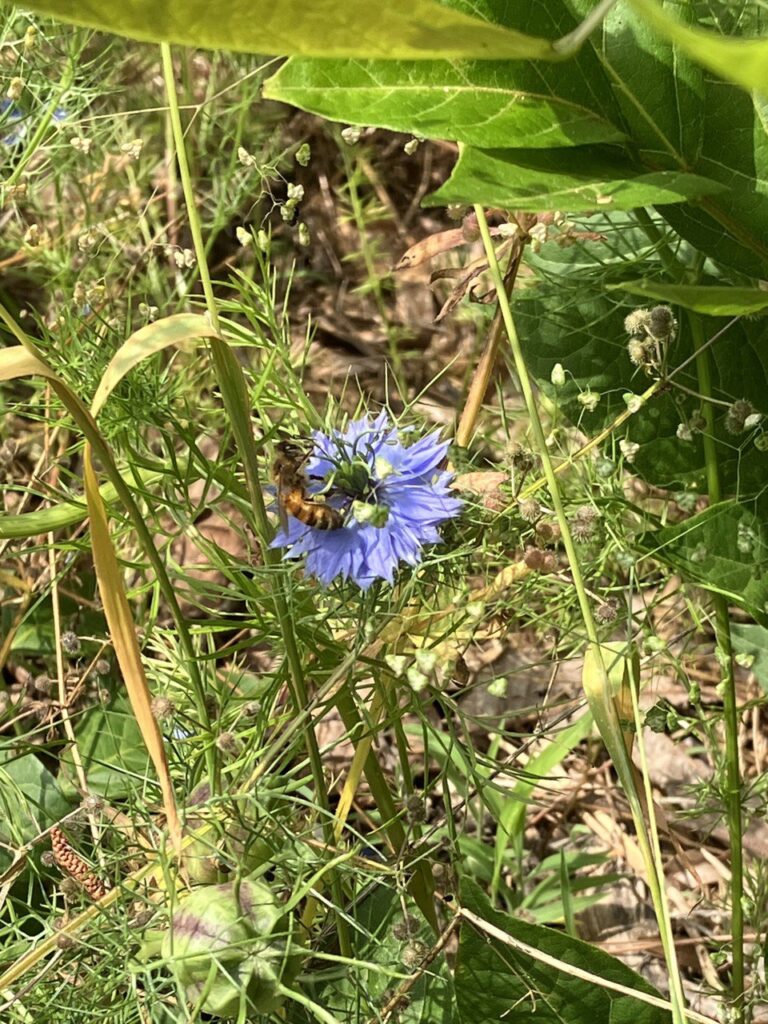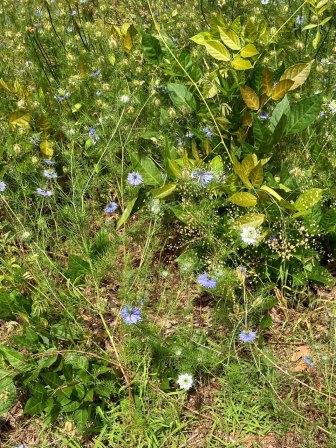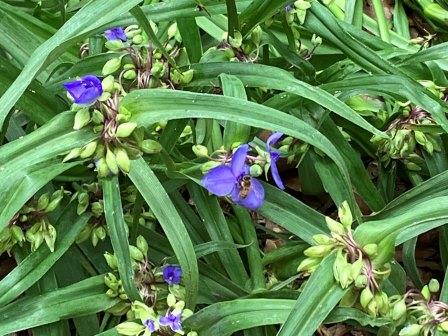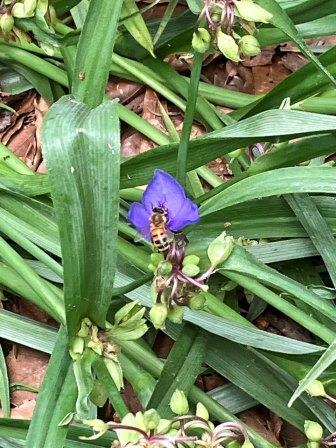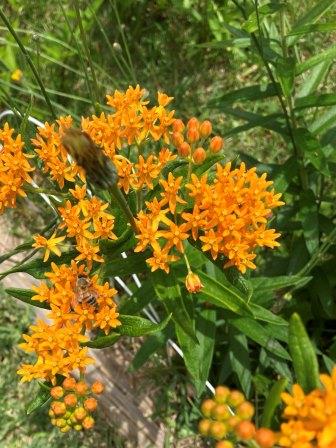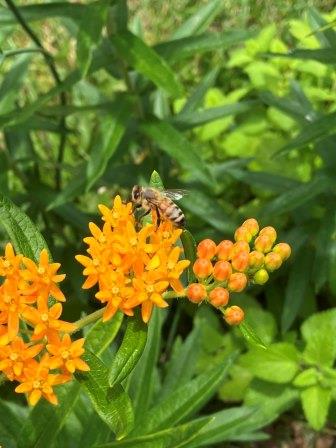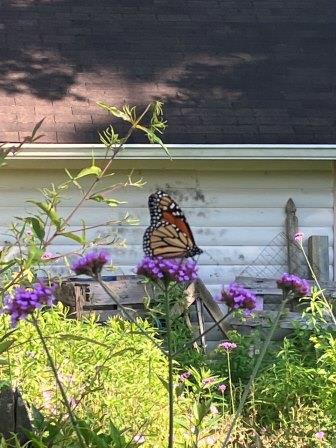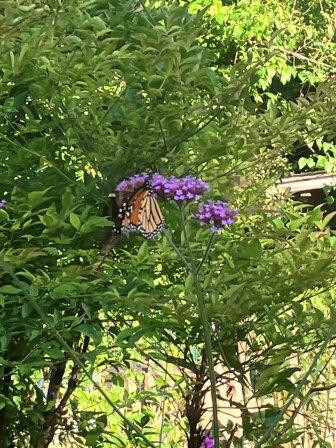Busy months and lots of things are blooming.
But the weather has been very strange. I’ll leave it at that. We have all noticed and some are starting to question why!!
These flowers might not produce a bunch of honey for the beekeeper, but they will certainly sustain the Bees after a nectar flow. These flowers are grown in North Carolina.
Sparkleberry/Farkleberry/Huckleberry – Vaccinium arboreum
– also known as winter huckleberry, is native to the southeastern United States, from Virginia to southern Illinois, south to East Texas and south-central Florida. It is a small bushy tree, with short, leaning, crooked trunk, contorted branches, and a dense, round crown. It grows to around 8-10 feet tall, it grows on sand dunes, hammocks, dry hillsides, meadows, and in rocky woods. Sparkleberry blooms in the spring (April – May) with drooping clusters of small, white, bell-shaped flowers. The flowers attract butterflies and other pollinators. Pollinated flowers produce a blue-blackish berry in late summer, early fall. This shrub can be a very good source of early nectar for pollinators.
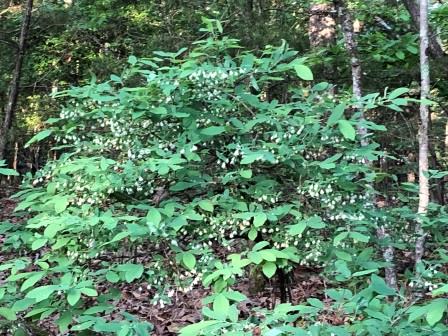
Carolina Holly – Ilex ambigua – native to the southeastern and south-central United States. Small white flowers produce a nectar source for the honey bee. Because birds love the red berries that it produces in winter, this has been deemed by some to be invasive and noxious plant. All Hollies need a male tree in the vicinity to produce berries.
Horehound – Herb – Marrubium vulgare – is a flowering plant in the mint family (Lamiaceae), native to Europe, northern Africa, and southwestern and central Asia. It is also widely naturalized in many places, including most of North and South America. I am a fan of all sorts of Herbs, hoping one day to make the cough drops that used to be popular. It is a pleasant surprise to see the bees foraging on them.
Love-in-a-mist, Nigella damascena, is a charming old-fashioned flower that blooms in spring and early summer. The genus name Nigella comes from the Latin niger (black), referring to the intense black seeds. One of about 15 species in this genus in the buttercup family (Ranunculaceae). Very easy to grow and lovely pod seeds scatter the garden after they are done blooming. Where ever I spinkle seed, they come up. A real No Fuss flower.
Virginia Spiderwort – Tradescantia virginiana– perennial herb. Bees get nectar and pollen from the purplish or white blooms of this old timey plant. It blooms from early spring to June. This plant can multiply rapidly in a sunny spot, so give it room or, if planted in a shadier spot, does not multiply as quickly.
False Dandelion – Hypochaeris radicata – also known as flatweed, cat’s-ear, hairy cat’s ear or false dandelion, is a perennial, low-lying edible herb. This plant is found more in pastures and fields and grows about knee high. It provides both nectar and pollen to the honey bee. Blooms for a few hours and then closes. The Bees know when it’s open.
I did not realize how heavily the bees foraged on this plant. I was mowing and stopped immediately! By the time I got back to take a picture, the blooms had closed for the day and the Bees moved on to something else.
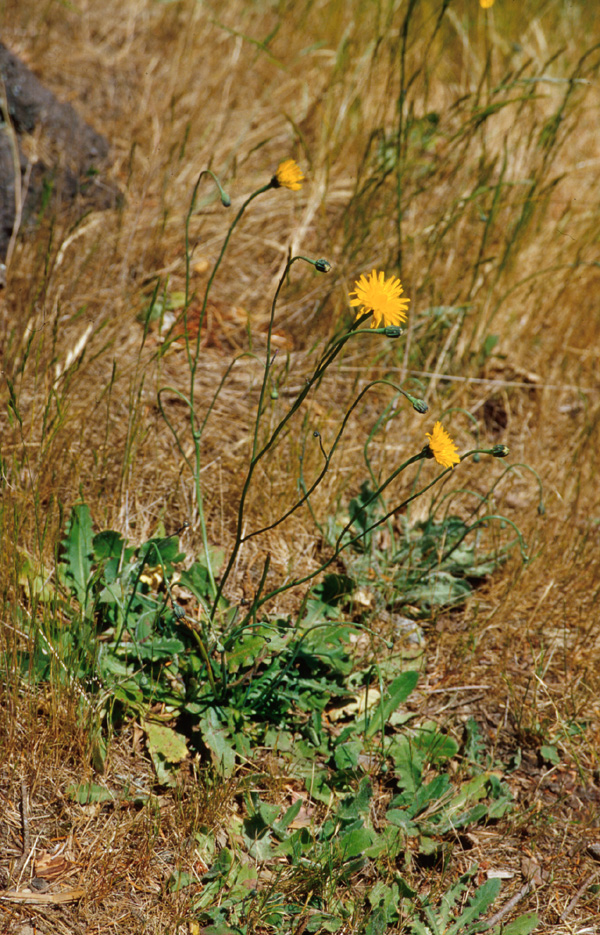
Butterfly Weed – Asclepias tuberosa – is a species of milkweed native to eastern North America. It is a perennial plant, with clustered orange or yellow flowers from early summer to early autumn. This plant not only is a source of nectar for the Honey Bee but also butterflies (including the Monarch) and all native bees and insects. It’s cone shaped seed pods produces seeds which propagate easily for growing more plants. The Honey Bee will become “drunk” from the nectar of this flower.
Yes, that is a good amount of flowers blooming in May. The saying “April showers bring May flowers” is true!!
Here is a last treat. Until next month
Namaste’

